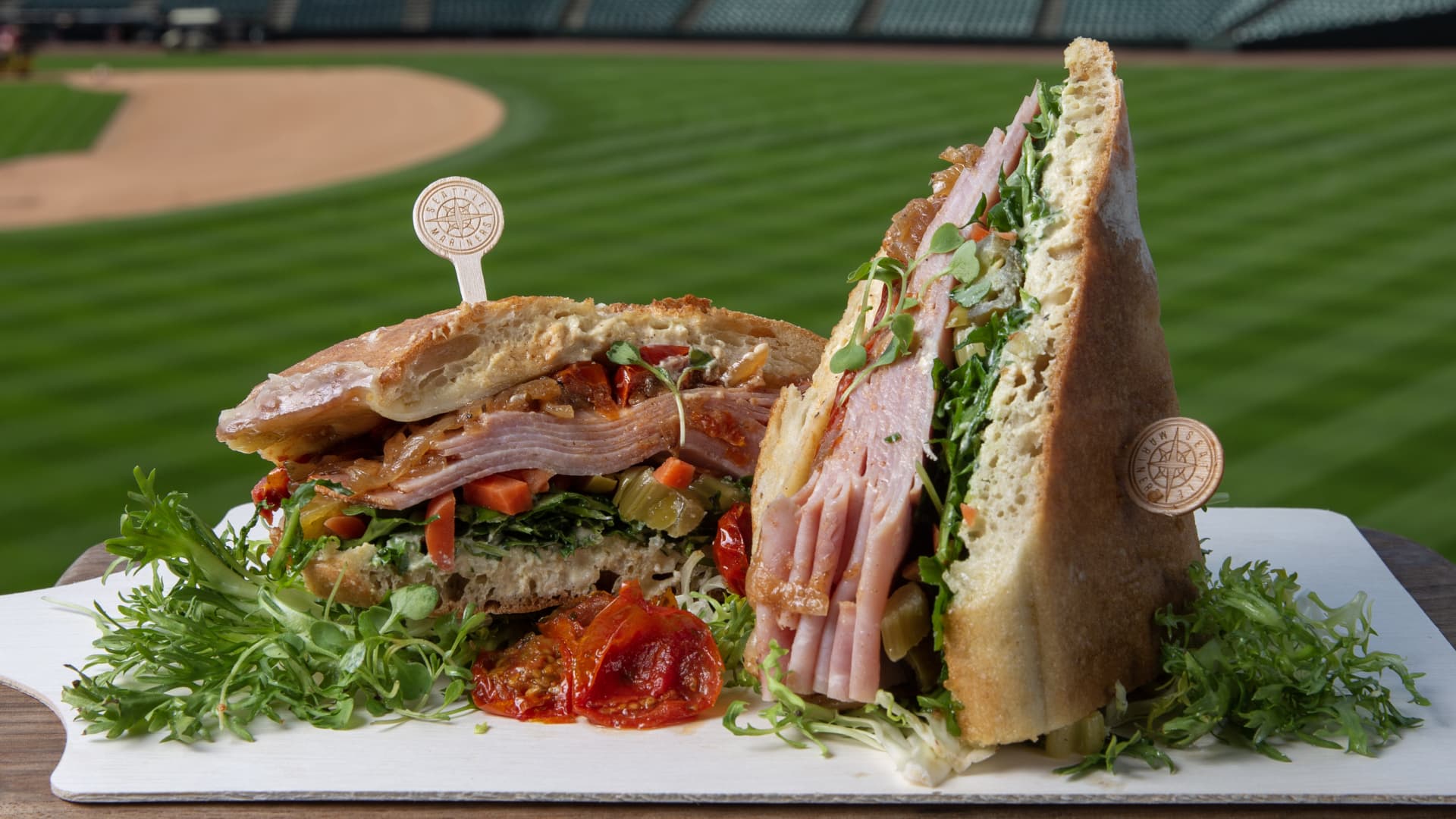Food at your favorite ballpark is probably going to be more expensive
Sodexo Live, a food and hospitality company, says food inflation is also hitting the ballpark
Courtesy: Seattle Mariners
Those peanuts and crackerjacks may soon cost you more at the ballpark, thanks in part to food inflation, the CEO of a top hospitality company told CNBC.
“It doesn’t matter what industry you’re in, everybody is noticing prices going up, and scarcity being an issue in certain product lines,” said Belinda Oakley, Sodexo Live CEO. “Of course, we were no exception to that.”
Sodexo Live operates food, beverage and hospitality services at Seattle’s T-Mobile Park as well as 200-plus sports, cultural and entertainment properties throughout the U.S. Oakley said the company’s scale, and the fact that it has about $20 billion in purchasing power, is helping to mitigate some of the inflationary pressure.
Still, higher costs have forced Sodexo Live to get creative with its menus and food selection.
Sodexo Live is changing some ingredients, mixing up its suppliers, and sourcing more items locally to reduce costs and to avoid passing along 100% of the price increases to the consumer, Oakley said.
“It will still be a phenomenal experience for the fan, but might be more cost-engineered to make sure that we’re not outpricing them from the market,” she said.
At T-Mobile Park, the company is expanding the number of value menu items it offers, priced between $2 and $4, to a dozen items, up from seven last year.
One big item that could see sticker shock: ball park franks, which also happen to be a top-selling concessionary item for Sodoxo Live. Oakley cited higher supply chain costs, including packaging and labor, for driving up meat prices.
Sodexo Live says they are trying to be more creative with their offerings to prevent customers from having to pay more.
Courtesy: Seattle Mariners
Location matters, though, according to Oakley, and prices vary depending on your geography. The distance between a ballpark and a vendor can make a big difference, as can market pricing. For example, if you look at pricing last year for the average price of a hot dog — it was most expensive on the West Coast, with the San Francisco Giants charging $7.50.
“You’re going to see a higher cost impact in California then you’re gonna see in Indiana,” Oakley said.
Another are experiencing harsh pricing pressure, Oakley said: plastics and disposables, key materials in preparing food that can be transportable.
“The Russia-Ukraine war has had a huge impact in that area,” she said. For example, resin, a key ingredient in making disposables, has been hugely impacted.
But when it comes to pricing, the company is keeping the long game in mind.
“We need consumers to continue to want to have these experiences outside of their day-to-day and to use their discretionary spend to actually go and enjoy hospitality,” she said.
For all the latest Technology News Click Here

